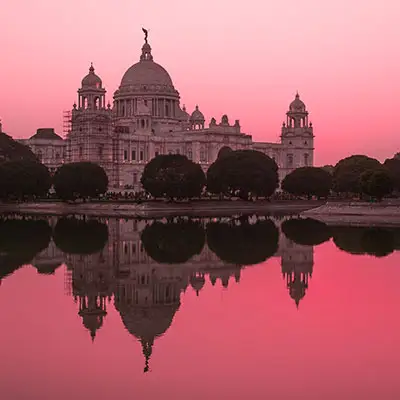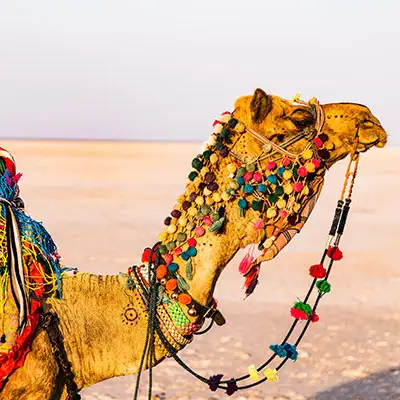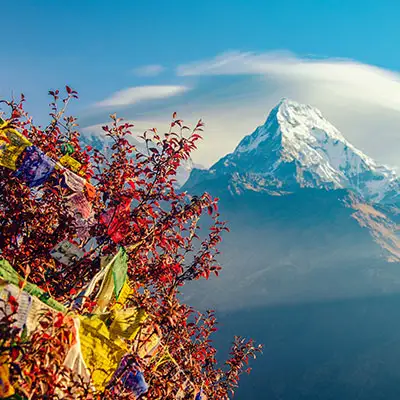There’s no shame in admitting if, when you’re planning a trip, the sheer number of possibilities make you a bit dizzy. Once you start to research all the places you could go, the food you can eat, the amazing hotels or lodges you could stay in, it can be hard to choose what to do. If you’re traveling in India, this is a very real challenge.
As the eighth-largest country in the world, India literally covers a lot of ground. That means there’s no shortage of variety. In a single trip, you could encounter desert lowlands, tropical jungle, and some of the highest mountains in the world. India recognizes nearly two dozen official languages. And its 29 states cook up deliciously diverse cuisine. It would take a lifetime to sample it all.
An entire book wouldn’t be enough to cover the best places to travel in India, but we’re going to give you some of our favorite spots, plus a few tips for getting around, to answer your biggest question: How do I travel in India?
How to Travel in India
With such varied terrain, crowded cities, remote wilderness, and everything in between, getting around and staying safe takes planning.
Health requirements for international visitors
If you’re from India traveling within your own country, you probably have the health requirements and vaccines necessary for your trip. Especially if you’re coming from abroad, though, it’s best to talk to your local health care provider or travel clinic about necessary precautions. Depending on where you’re going, you may need vaccines for yellow fever, typhoid, or malaria, for example. It’s also a good idea to get travel medical insurance with quarantine coverage and know what to do if you do become ill while traveling.
Visa requirements for India
Tourist visas are required for international travel to India. The fastest and easiest way is with an eVisa, submitting your application online. Your visa will then be issued electronicallyTransportation in India
The best way to travel around India is by train. Just take time to figure out the classes of trains before you buy. You will find some very inexpensive tickets, but note that the less the ticket costs, the more uncomfortable your ride is likely to be. Even in the fall, a second seating class is likely to get very warm as you’re crammed in with other passengers.
When you’re trying to get around town, taxis can be a good option. Again, preparation works to your advantage. You might have to negotiate the price and be sure to agree on a price with the driver before you go anywhere, especially if it’s obvious you’re a tourist. Taxis in India can take many forms — cars, motorcycles, or rickshaws.
Best Places to Travel in India
Travel in India offers so many opportunities. There’s snorkeling on the coast or trekking in the high mountains. There are deeply religious sites and festivals with acrobats. Our list is nowhere near exhaustive of all you can experience in India, but we hope these inspire some ideas to excite you about your next trip.
Gokarna, Karnataka
It’s hard to choose just one place in the state of Karnataka, located on the southwest coast. Gokarna brings the calm of nature with beaches, cliffs, and green hills. Om Beach is a popular tourist spot to try out water activities.
While Gokarna is known as a Hindu pilgrimage site, there are many other spiritual destinations in the state. Murudeshwar is home to the world’s second-tallest statue of Lord Shiva. And with its ruined ancient temples and monuments, Hampi has earned a UNESCO World Heritage Site designation. Not all of Hampi’s sites are ruins, however. You can also visit the impressive Virupaksha and Vithala temples, renowned for their beauty and architecture as well as Hindu significance.
Kolkata, West Bengal
Moving north and east, Kolkata, or the “City of Joy,” is a great place to visit, especially in the fall. The Durga Puja festival takes place in September and October. This major festival of Hinduism was added to UNESCO’s Intangible Cultural Heritage list in 2021.
Even if you aren’t there for the festival, there’s plenty to see and do. The Victoria Memorial Hall is a holdover of British colonization, and today it is the largest of India’s museum libraries, complete with nearly 60 acres of paintings, artifacts, and gardens. You can also tour Kalighat Kali temple, one of the most visited in India, as well as Mother Teresa’s Mother House.
If you’re looking for a microcation or day trip from Kolkata, add Darjeeling to your itinerary. This hill station sits at an elevation of about 2,000 meters (6,700 feet — about as high as the tallest peak in the United States’ Great Smoky Mountains), offering mesmerizing views. Climb Tiger Hill for panoramic views of the Himalayas, including Mount Everest and Mount Kanchenjunga, and the more modest slopes that are home to tea plantations.
Auli, Uttarakhand
Farther north still is the hill station of Auli. Considered one of the best ski resorts in India, Auli is a winter paradise. If you’re not drawn to skiing, the city still offers amazing views of the Himalayas.
Fall is an excellent time for a visit as well. The temperatures aren’t yet bitterly cold, and you can enjoy nature's offerings more fully. Relatively short treks to Chattrakund or Auli Artificial Lake are well worth the effort.
Pushkar, Rajasthan
It might be surprising that Pushkar in the state of Rajasthan is known as the “Venice of the East” given that it’s located in the country’s interior. However, the area has many beaches and is home to Vembanad, the second-largest lagoon in India.
A Hindu pilgrimage city, Pushkar doesn’t have the same notoriety as some of the other key sites in the country. That means that visiting the area’s temples comes with fewer crowds.
A trip in the fall means you also might be there in time for the Pushkar Camel Fair. Although the original fair was for livestock traders, today it’s a massive tourist attraction complete with camel beauty contests, music and dancing, and rides.
Best Trips to Take from India
When you’re ready to explore outside of India, where do you go next? Some of the most popular destinations are to the southeast, but north through the mountains provides inescapable beauty to explore, too.
Bhutan
If you’re wondering how to travel to Bhutan from India, the answer is cheaply. Bhutan is one of the most inexpensive countries to visit from India, but even if it weren’t, the experience would be worth the cost.
Make sure to get an eVisa before arrival, so you aren’t turned away at the border. Depending on your country of residency, you may be able to get a visa on arrival for visits of up to seven days.
Visit the Tiger’s Nest Monastery, one of the most picturesque places of worship you’ll find. Nestled onto the side of a mountain, the six-kilometer (four-mile) hike takes three to five hours over steep terrain. Take your time, not only for your safety, but also to absorb the improbable views along the way.
Nepal
If entering Nepal from India — and you aren’t an Indian citizen — you will need a visa. You can now get eVisas for Nepal.
Nepal is the place for affordable trekking if you can withstand colder temperatures. Visit Gokyo Lake for views of Mount Everest. Or take a break from the cold by going down to Siddha Gufa, the largest cave in Nepal.
Thailand
Indian citizens traveling to Thailand now need a visitor visa, which you can get by visiting a local embassy, consulate, or visa center before your trip. Also, travel health insurance is recommended. U.S. citizens staying for less than 30 days do not need a visa.
Thailand is another inexpensive destination, which is good since there are so many places you’ll want to add to your itinerary. Cities offer plenty of nightlife and metropolitan excitement, and there’s also no shortage of secluded beaches where you can relax. If you’re ready to brave the tourist crowds, visit Ko Khao Phing Kan, also known as James Bond Island, in Phang Nga Bay.
Maldives
To travel to Maldives from India, you will need to get a visa on arrival.
Once you’re there, make Vaadhoo Island one of your first stops. Go at night to see the beach glow with bioluminescence, light emitted by living organisms. The best time to see this bizarre natural phenomenon is between July and February and during a new moon when it’s extra dark outside.
Stay in an overwater bungalow on one of the approximately 105 private island resorts while you sample the wealth of seafood.
Protect Your Trip with Travel Insurance.
Whether you’re an Indian citizen traveling within your own country or an international traveler looking for your next adventure, protect yourself with travel insurance.
If you’re traveling abroad, Seven Corners Travel Medical Insurance is a great option for protecting your health. When your domestic health insurance doesn’t cover you overseas, travel medical coverage can help you with the cost of emergency care if you get sick or hurt while traveling.
U.S. residents visiting India or other international destinations should check out Seven Corners Trip Protection. These plans can reimburse you for prepaid, unused trip costs if you have to cancel or interrupt your travels for a covered reason as well as provide medical coverage if you become ill or injured during your trip.
Visit SevenCorners.com or talk to one of our licensed agents to find the best travel insurance for your next trip.
Travel Like a Pro with The Wayfinder
Did you enjoy this blog? Get more articles like it before anyone else when you subscribe to our monthly newsletter, The Wayfinder.
Sign me up



